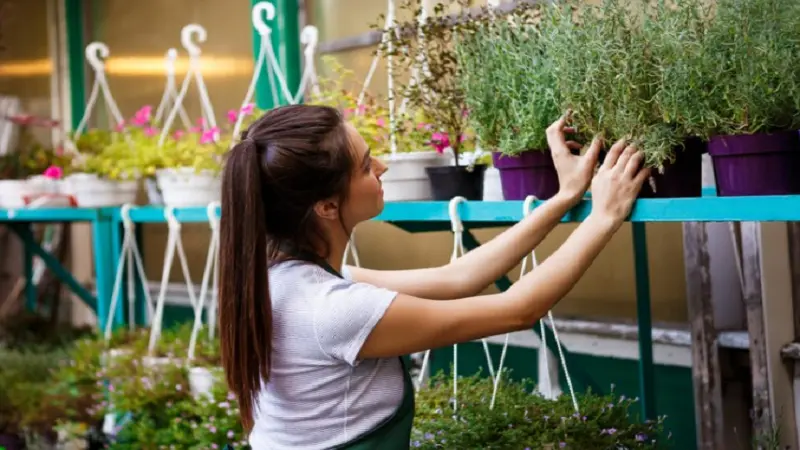1. Understanding Your Space: A Foundation for Success
Before diving into design elements, it’s essential to understand the unique characteristics of your garden space. Take note of the following aspects:
Sunlight and Shade
Identify which areas of your garden receive full sunlight, partial shade, or full shade. This will influence your plant selection and placement. Sun-loving plants like lavender and marigolds thrive in sunny spots, while ferns and hostas prefer shaded areas. Decoradhouse Garden Tips By Decoratoradvice
Soil Quality
Assess your soil type and quality. Conduct a soil test to determine pH levels and nutrient content. This helps in choosing the right plants and amendments. Loamy soil is ideal for most plants, but if your soil is sandy or clayey, you may need to amend it with organic matter to improve its structure.
Climate Considerations
Your region’s climate will dictate which plants will flourish in your Decoradhouse Garden Tips By Decoratoradvice. Research plants that are suited to your local climate to ensure they will thrive year-round. For instance, succulents are great for dry, hot climates, while hydrangeas prefer cooler, more temperate conditions.
2. Design with Purpose: Creating a Cohesive Garden Layout
A well-designed garden is both functional and aesthetically pleasing. Here’s how to achieve that perfect balance:
Define Your Garden’s Purpose
Think about how you want to use your garden. Are you aiming for a space to entertain guests, a peaceful retreat, or a productive vegetable garden? Your garden’s purpose will guide its design and layout. For entertaining, consider adding a patio or outdoor dining area. For relaxation, incorporate comfortable seating and calming water features. Decoradhouse Garden Tips By Decoratoradvice
Create Focal Points
Focal points draw the eye and create visual interest. These could be sculptures, fountains, or standout plants. Position focal points strategically so they catch the eye as you enter the garden or as you move through it.
Incorporate Pathways
Pathways not only provide practical routes through your garden but also contribute to its design. Use materials like gravel, flagstones, or pavers to create paths that complement your garden’s style. Curved paths can add a sense of movement and surprise, while straight paths offer a more formal look. Decoradhouse Garden Tips By Decoratoradvice
Mix and Match Plant Heights
Incorporate plants of varying heights and textures to create depth and visual interest. Use tall plants like ornamental grasses or sunflowers as backdrops, medium-height plants like shrubs or perennials in the middle, and low-growing ground covers or bedding plants at the front.
3. Selecting the Right Plants: Beauty and Functionality
Choosing plants that thrive in your garden’s conditions is key to creating a lush and vibrant outdoor space. Consider these tips for selecting the right plants:
Choose Native Plants
Native plants are adapted to your local climate and soil conditions, making them easier to care for and more resilient. They also support local wildlife, such as bees and butterflies. Research which native species are ideal for your garden and consider incorporating them into your design. Decoradhouse Garden Tips By Decoratoradvice
Plan for Year-Round Interest
Select a mix of plants that provide color and texture throughout the year. Include evergreens for winter interest, spring-blooming perennials, summer-flowering annuals, and autumn foliage plants. This ensures your Decoradhouse Garden Tips By Decoratoradvice remains attractive and engaging, no matter the season.
Consider Plant Companionship
Some plants thrive better when grown together, a concept known as companion planting. For instance, planting marigolds alongside tomatoes can help deter pests. Research companion planting strategies to optimize your garden’s health and productivity.
4. Enhancing with Garden Features: Adding Charm and Function
Incorporating various garden features can significantly enhance your outdoor space. Here are some ideas to consider:
Water Features
Water features like fountains, ponds, or small waterfalls add a soothing element to your garden. They can create a relaxing ambiance and attract wildlife. Ensure the feature you choose suits your garden’s scale and style. Decoradhouse Garden Tips By Decoratoradvice
Lighting
Garden lighting extends the usability of your outdoor space into the evening and highlights your garden’s features. Use a combination of ambient lighting (like string lights or lanterns), task lighting (for pathways or seating areas), and accent lighting (to highlight specific plants or features).
Furniture and Accessories
Choose garden furniture that complements your garden’s style and your taste. Opt for weather-resistant materials and comfortable designs. Accessories like cushions, rugs, and outdoor art can further personalize the space.
5. Maintenance Tips: Keeping Your Garden Thriving
A beautiful garden requires regular maintenance to keep it looking its best. Here are some essential maintenance tips:
Regular Watering
Consistent watering is crucial for plant health. However, avoid over-watering, which can lead to root rot. Water early in the morning or late in the afternoon to minimize evaporation and ensure plants receive adequate moisture.
Pruning and Deadheading
Regularly prune plants to promote healthy growth and remove any dead or diseased foliage. Deadheading, or removing spent flowers, encourages plants to produce more blooms. Decoradhouse Garden Tips By Decoratoradvice
Mulching
Apply mulch around plants to retain soil moisture, suppress weeds, and regulate soil temperature. Organic mulches like wood chips or straw also add nutrients to the soil as they decompose.
Weed Control
Weeds compete with your plants for nutrients and water. Regularly remove weeds by hand or use a hoe to keep them in check. Mulching can also help reduce weed growth.
6. Personalizing Your Garden: Adding Your Unique Touch
Your garden is a reflection of your personality and style. Infuse it with personal touches that make it truly yours:
Garden Art
Incorporate sculptures, wind chimes, or decorative pots to add character and whimsy to your garden. Choose pieces that resonate with your taste and complement your garden’s overall theme. Decoradhouse Garden Tips By Decoratoradvice
DIY Projects
Consider undertaking DIY garden projects like building a raised bed, crafting homemade planters, or designing custom garden markers. These projects can be both enjoyable and cost-effective ways to personalize your space. Decoradhouse Garden Tips By Decoratoradvice
Seasonal Decor
Adapt your garden’s decor to the seasons by incorporating seasonal plants, colors, and accessories. For instance, add pumpkins and hay bales in the fall or festive lights and ornaments during the winter holidays.
Conclusion: Crafting Your Perfect Garden
Designing and maintaining a Decoradhouse Garden Tips By Decoratoradvice that truly reflects your style and meets your needs is a rewarding journey. With Decoradyard’s expert tips and your creativity, you can create a stunning outdoor space that serves as a haven for relaxation, entertainment, and enjoyment.
Remember, the key to a successful garden lies in understanding your space, choosing the right plants, incorporating thoughtful features, and maintaining it with care. By following these guidelines and infusing your personal touch, you’ll craft a garden that’s not only beautiful but also a joy to experience throughout the year.
So, roll up your sleeves, embrace the process, and let your garden flourish into a vibrant extension of your home. Happy gardening!




